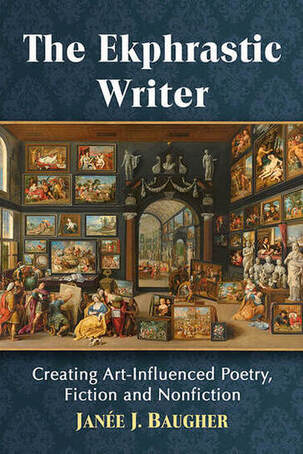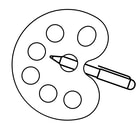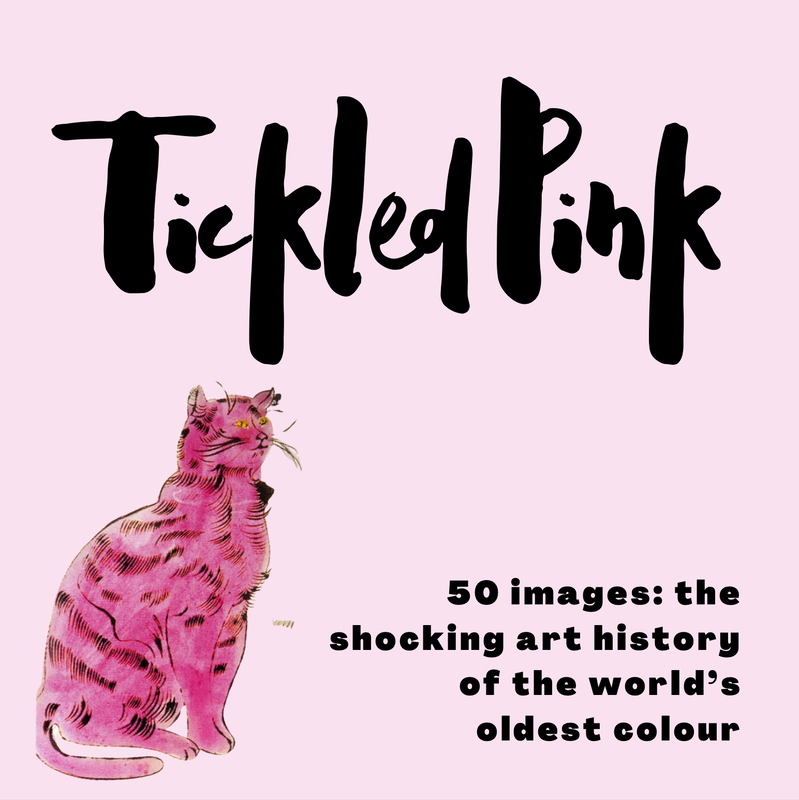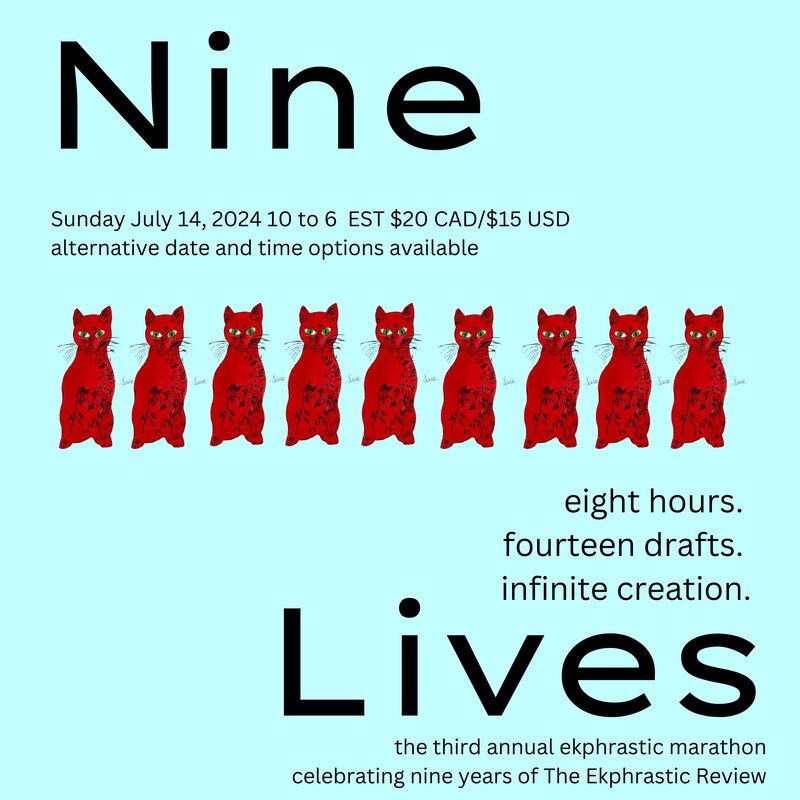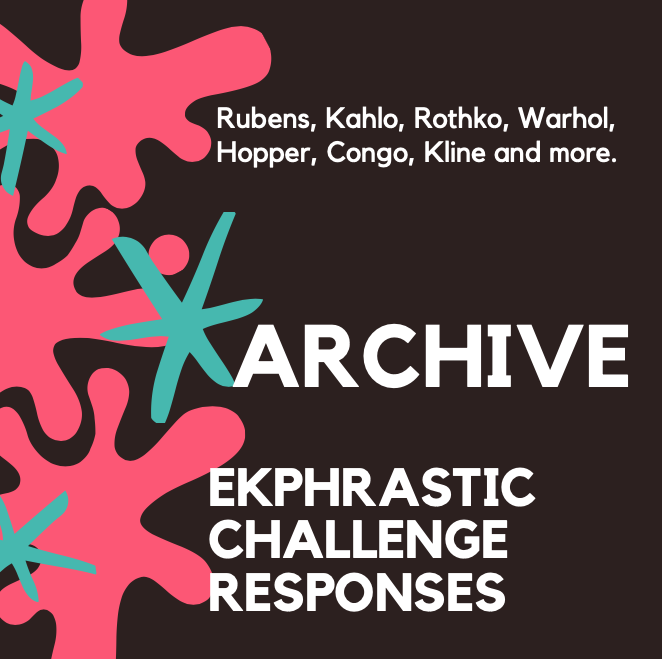|
Editor's note: The Ekphrastic Review is delighted to introduce The Ekphrastic Writer, Janée J. Baugher, with her first monthly column. Janée literally wrote the book on ekphrastic writing, as shown above, and featured here last month in an interview. Janée brings an incredible wealth of experience to the table. She taught creative writing in Seattle, is an assistant editor at Boulevard, has two ekphrastic collections of her own, and is this year's Write-in Residence at the Maryhill Museum of Art. It is a tremendous privilege to have her on board. Please feel free to introduce yourselves or welcome her in the comments below. Welcome, Janée! ** The Ekphrastic Writer’s Column Dear Ekphrasists, Welcome to the first installment of the Ekphrastic Writer’s column. As the author of the first comprehensive guidebook on multi-genre ekphrasis, The Ekphrastic Writer, I’ll be posting monthly musings, fielding your questions on ekphrasis (and beyond), and fostering a conversation on contemporary practices in visual-art-influenced creative writing. What compels you to the page? If you fancy yourself an ekphrasist, it’s the visual arts, I presume. Since beauty enraptures, aesthetics is your chief concern? Once you’ve settled on the type of art that enchants you, it can feel natural or intuitive to springboard to the page. Though, I wonder, how did you discover what type of art delights you? Are you also a visual artist? Did you take courses in art history? Or, do you suffer, as I do, with artist envy? Perhaps engaging with the visual arts, you’ve found, is a meditative act, a gratitude practice. If you’re similar to me, you’ve realized that ruminating on an artwork is one method by which to extinguish the personality. To obliterate the conscious self. Viewing art raises questions without actually answering them, and there’s reverie in the irresolute discovery. As literary artists, our work is limited only by our imaginations; standing before a painting or sculpture (for example), has the potential to reframe our purview and usher us to new dimensions of creativity. To see the unseeable. To utter the ineffable. I myself have an undiagnosed dis-ease with seeing: often, effortlessly, and ignorantly, I mis-see words and phrases upon the first read. For instance, I once began composing a job application for a “bookkeeper” because I love books and therefore happily sought a paid position to be their loyal custodians. Last year I mis-read a single vowel in a phrase of an online article and was astounded that the author, too, agreed that “love is the greatest farce on earth.” I highlight my language gaffes because in viewing art, I have found a space wherein it’s permissible to make creative use of (what Aristotle called) “essential and accidental errors.” Have you considered what renders a piece of ekphrastic writing successful? Is it mandatory that you attend to the artwork in a tangible way to satiate the curiosity of your readers? Because you’re the first recipient of your own writing, is that it pleases you the primary objective? Is ekphrasis, then, merely a thought experiment or a multifaceted system of inquiry? During the process of writing The Ekphrastic Writer, I read, researched, and compiled a list of general conventions that an ekphrasist can take. And, while the conventions are varied (e.g., narrating the artwork, addressing the artist, adopting the artist’s artistic style), what’s clear to me is that ekphrastic writing does not adhere to unique qualifications within the literary canon. In other words, regardless of the poem’s, story’s, or essay’s germination from an artwork, the ekphrastic writing is held to the same standards on which non-ekphrastic poems, stories, and essays are critiqued. What are your thoughts? If you wish to join the conversation, send your letters to E.W. (no attachments) at ekphrasticwriter@gmail.com. Ekphrastically Yours, EW E.W. (Janée J. Baugher) is the author of The Ekphrastic Writer: Creating Art-Influence Poetry, Fiction and Nonfiction (McFarland, 2020), as well as the ekphrastic poetry collections, The Body’s Physics (Tebot Bach, 2013) and Coördinates of Yes (Ahadada Books, 2010). Recent work has appeared in Saturday Evening Post, Tin House, The Southern Review, The American Journal of Poetry, Nimrod, and The Writer’s Chronicle. Her writing has been adapted for the stage and set to music at venues such as University of Cincinnati, Interlochen Center for the Arts, Dance Now! Ensemble in Florida, University of North Carolina-Pembroke, and Otterbein University, and she’s performed at the Library of Congress. Currently, she’s an assistant editor at Boulevard magazine and the 2021 poet-in-residence at Maryhill Museum of Art. www.JaneeBaugher.com
0 Comments
Your comment will be posted after it is approved.
Leave a Reply. |
The Ekphrastic Review
COOKIES/PRIVACY
This site uses cookies to deliver your best navigation experience this time and next. Continuing here means you consent to cookies. Thank you. Join us on Facebook:
Tickled Pink Contest
April 2024
|
